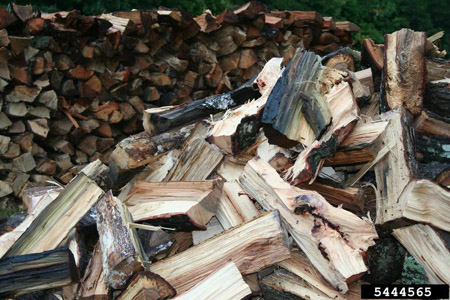Hydraulic log splitters are great tools for making your firewood production fast and efficient. However, a plan needs to be developed on how it will be used to ensure safe operation.
For most of my life, I have been a maul man. I thoroughly enjoy and get much satisfaction from splitting rounds with a maul. Even after splitting numerous elm forks and pounding away at wood that was hard pressed to give up clinging together, I still favor a maul. However, recent events have opened my eyes to a whole other world, and I fear I will not ever be the same again.
The past year was like any other when it came to producing seasoned firewood for the wood stove. Several trees had been felled in the woods in the fall, and were waiting for processing by the time spring and summer came around. Additionally, a neighbor took it upon himself to drop a few of our trees that were hindering his work in the fields (another story that I will have to relay some time). So I had no shortage of trees to perform my magic on, but I did have a shortage of time compared to previous years. Processing trees into rounds was going just fine; it was the splitting into stove sized pieces that was holding the whole show up.
My trusty assistant (who shall remain nameless) and I looked at the pile of rounds and then at each other, and realized we would not be able to finish in the time we had. He then made the suggestion that would forever change my life. “Why don’t we use my brother’s log splitter?” he said. After hours and hours spent splitting and not making a dent in the pile, I relented and joined the rest of the modern world.
Don’t get me wrong. I have seen log splitters in action before, and have been very impressed with the production they are capable of. However, with the addition of the chainsaw to our tree felling arsenal, splitting by hand is the best way for me to really feel a part of the firewood making process.
Looking over the log splitter, we quickly realized that this would be a bit more complicated than we were used to. With the maul, the steps are pretty clear: grab a hold of the handle, swing and hit with power and accuracy, don’t hit yourself. The log splitter doesn’t require a whole lot more steps, but has the potential to cause injuries a bit more severe than the maul. So we took the usual precautions when working with a machine including wearing hearing and eye protection, no loose clothing, and being aware of what the other guy is doing.
We developed a system for the two of us to work together. I would load the rounds, he manned the switch, and we both tossed the split pieces away from us to be stacked later. And with that, we began to process rounds.
We quickly realized that this little invention was something pretty special. The pile of rounds was turning into a pile of stove-sized wood faster than assistant number two could stack up. By our calculations, we cut about 75% off the time it would have taken us to split the rounds by hand. Truly, a life changing experience.
We did find that the work lacked much of the interactions one gets while splitting by hand together. There was no opportunity to remark on the toughness of a particular piece of wood or pour grief onto the fool who cut the round at an angle or relive the last football game. Instead, our interactions went something like this:
Me: We will have to spin this one to make it split better.
Assistant who shall not be named: No, the Packers won by a touchdown.
Needless to say, we developed a system of hand signals to communicate the few things we needed to relay, including clear, go, stop, and lunch.
I don’t know what the future holds for us using the log splitter again, but I will no longer feel prejudiced against them. Instead, I will embrace those times when the log splitter will help me achieve all that I need to and more.
